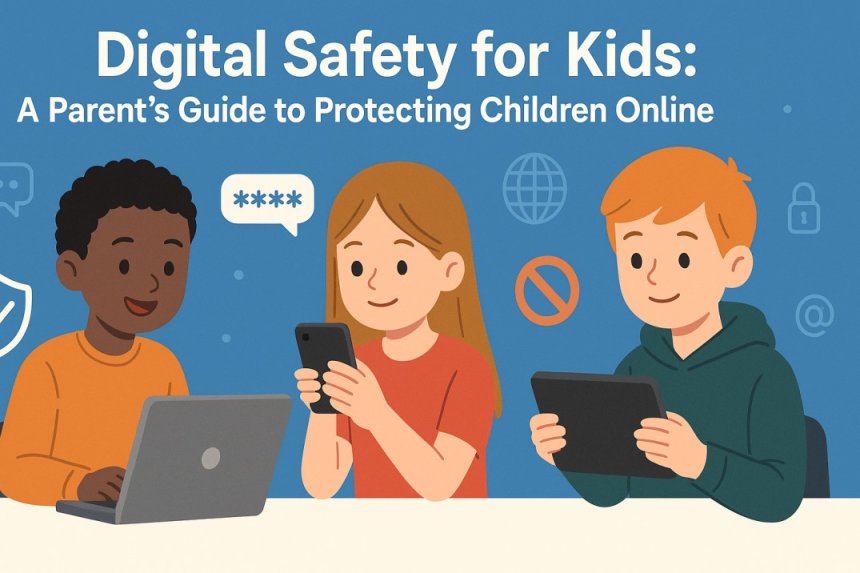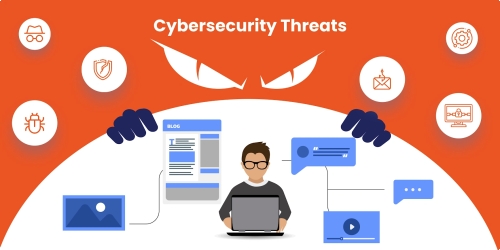Teaching Kids to Spot Fake News and Online Scams
In today’s world, information moves faster than ever. While the internet gives kids access to endless knowledge, it also exposes them to misleading posts, fake stories, and online scams that look convincing enough to fool even adults. From viral “news” on social media to fake giveaways and clickbait links, digital deception has become a daily challenge. Teaching kids how to recognize and question what they see online isn’t just about safety; it’s about building critical thinking skills that will last a lifetime.

Surfing the Internet means possible exposure to online scams, something your children might not have any concept of. If you’re allowing them to go online, it’s imperative that you discuss online scams. Such scams come in a variety of guises, including those that specifically target children.
Let’s look at how to best protect your kiddies from those who would scam them.
Educate yourself first
The first step in protecting your children from online scams is to educate yourself on the types of scams currently floating around the Internet. One type of scam is the free trial offer, which claims to provide, for example, free one-month trials of some “amazing” product. Other examples of Internet scams include fake Wi-Fi hotspots; social media and email messages indicating you’ve won an expensive prize or should enter a contest to win an expensive prize; and bogus pop-ups warning of supposed viruses and malware. The latter scam often looks like legitimate antivirus programs, but what you’re doing to “fix” your computer is actually infecting it with a virus.
Unfortunately, these are merely some of the many online scams that exist, so be sure to do your homework.
The Rise of Digital Deception
Fake news and online scams thrive on curiosity and trust. A catchy headline, a too-good-to-be-true offer, or a suspicious message can quickly spread misinformation or steal personal data.
Children and teens are especially vulnerable because they:
- Spend long hours on social platforms where misinformation spreads quickly.
- Trust influencers and viral content more than traditional news sources.
- May not yet recognize the subtle tactics scammers use to manipulate emotions.
That’s why digital literacy — the ability to think critically about what we see online — is now as essential as reading or mathematics.
Spotting Fake News: What Kids Should Know
Teaching kids to identify fake news starts with helping them slow down and analyze what they read. Encourage them to ask:
-
Who is behind this?
-
Is it a credible source or a random page with no author?
-
Reputable news sites always provide author names and publication details.
-
Is it emotionally charged?
-
Fake stories often use fear or outrage to grab attention.
-
Teach kids to recognize when something feels exaggerated or manipulative.
-
Can it be verified?
-
Look for the same story on multiple trusted outlets.
-
Encourage kids to cross-check with reliable news or fact-checking websites.
By making this part of their daily online routine, kids learn to think before they share.
Avoiding Online Scams: Simple Habits That Protect
Scammers are clever, but their traps often follow familiar patterns. Help kids build smart digital habits:
-
Don’t click suspicious links, whether in messages, emails, or comments.
-
Ignore “too-good-to-be-true” offers, like giveaways, prizes, or free game currency.
-
Keep personal details private. Never share full names, addresses, or passwords online.
-
Ask before downloading anything, even apps or games that look harmless, can carry malware.
-
Double-check profiles. Scammers often impersonate friends or influencers.
When kids know these red flags, they can avoid falling into digital traps before it’s too late.
Using Technology to Help
You don’t have to do it all manually. Today’s devices and browsers include tools that reinforce online safety:
-
Built-in phishing protection that flags risky sites and downloads.
-
Parental control software that filters content and alerts parents about suspicious activity.
-
Browser extensions like NewsGuard or FactCheck.org add reliability ratings to online sources.
These tools, combined with regular discussions, create a layered defense that keeps young users safer online.
Learning the signs
Once you feel secure in your knowledge of Internet scams, it’s time to pass this information on to your kids. Educating them about indicators of scams is important, with typical signs including:
Errors
Many Internet scams are rife with grammatical and spelling errors. If you receive messages laden with such errors about a “great deal” or contest, it’s probably a scam, even if it comes from a “friend.” However, there are plenty of Internet scams that contain flawless wording, as it’s one of the ways scammers make their messages look legitimate.
Foreign offers
Messages from “foreign princes” claiming you need to help them transfer thousands of dollars, and simply have to pay the $150 wiring fee to enjoy a cut of the money, are now-classic online scams.
Emotional manipulation
Manipulating emotions is another common scammer trick. Financial stress, loneliness, and frustration are examples of the emotional states scammers prey on. They might not ask for money, but they will insist on personal information, which they will then use to steal identities.
Talent searches
“Kids talent searches” are types of scams that target children specifically. These scams might suggest that a child joins a particular modeling agency or accepts an invitation for a screen test. They may seem real at first, but they always ask for money to continue “working” with the agency.
Scholarship scams
Another scam that targets children is scholarship scams. They claim to be recognizing children for academic achievement but, as with talent scams, require paying significant upfront fees.
Building Critical Thinkers, Not Just Safe Users
The ultimate goal isn’t just to protect kids, it’s to empower them. When children learn to question what they see and think independently, they become more than careful users; they become critical thinkers ready for the digital world.
Encourage curiosity. Ask questions together. Make it normal to doubt before sharing. Because the best defense against fake news and scams is awareness.
Teaching kids to recognize fake news and online scams is about more than avoiding mistakes – it’s about giving them the confidence to navigate a world filled with information. With the right tools, habits, and mindset, they can stay informed, safe, and smarter online.
Share
What's Your Reaction?
 Like
0
Like
0
 Dislike
0
Dislike
0
 Love
0
Love
0
 Funny
0
Funny
0
 Angry
0
Angry
0
 Sad
0
Sad
0
 Wow
0
Wow
0












